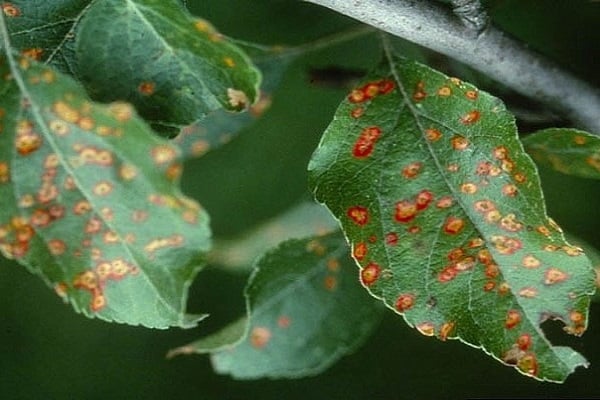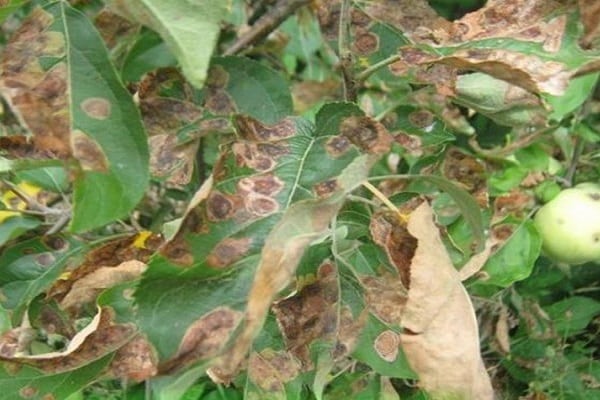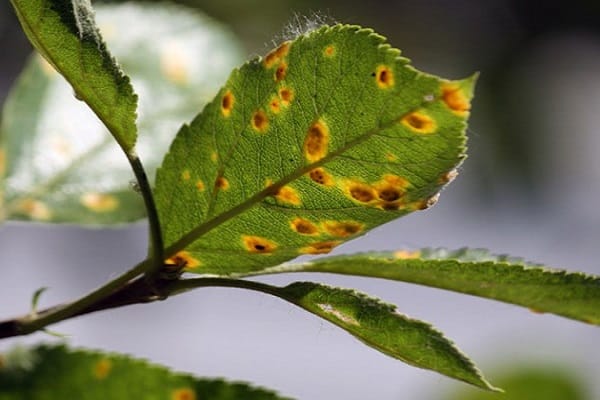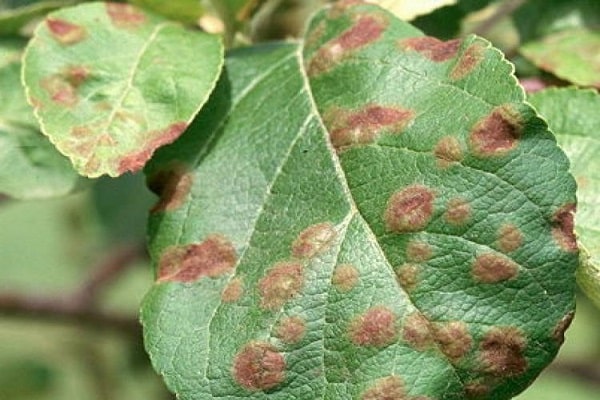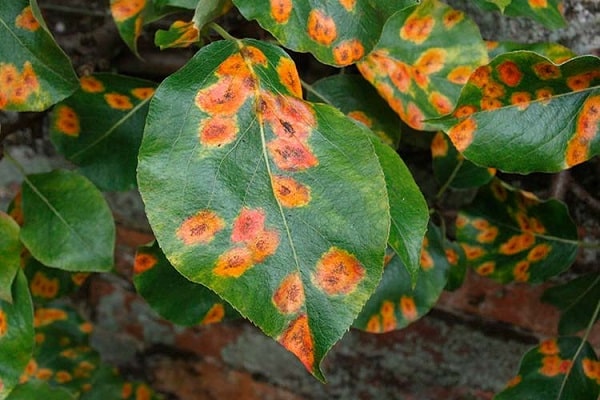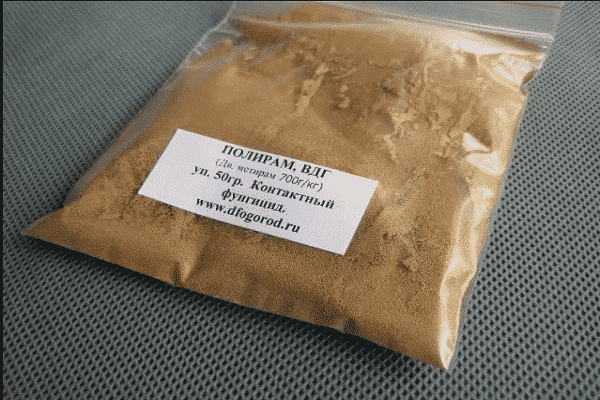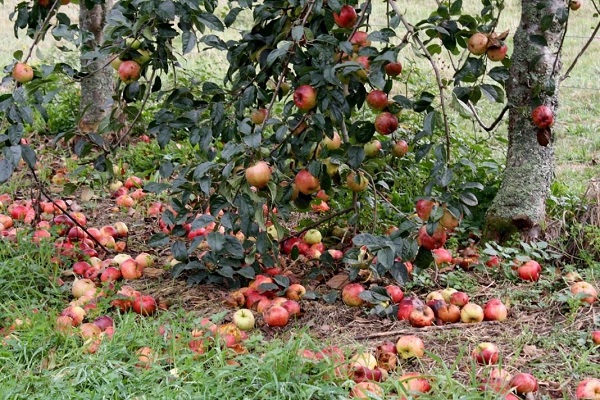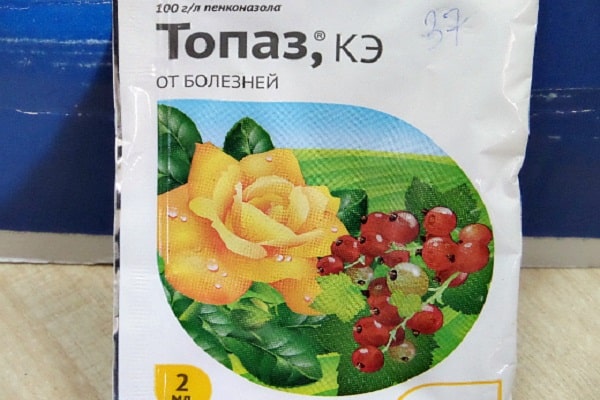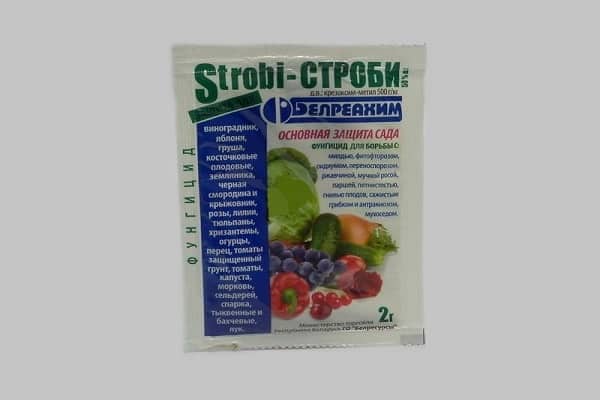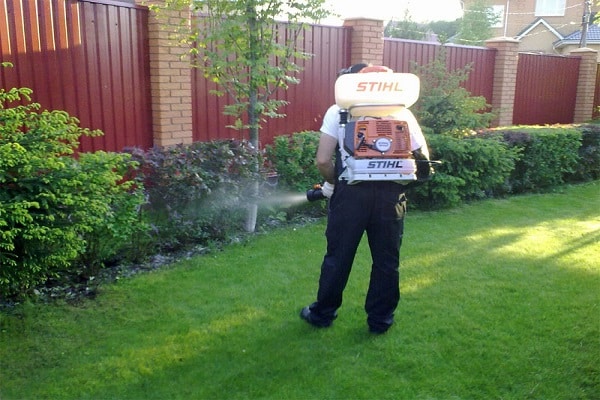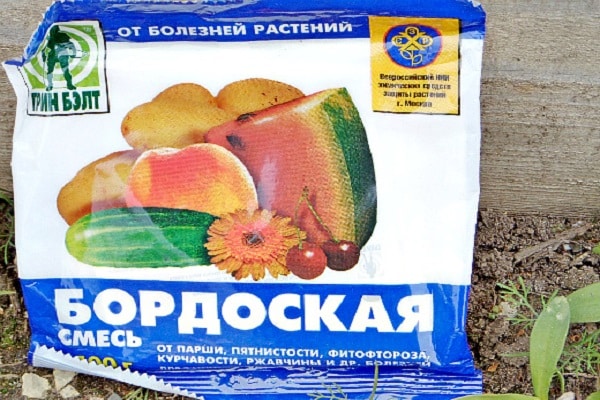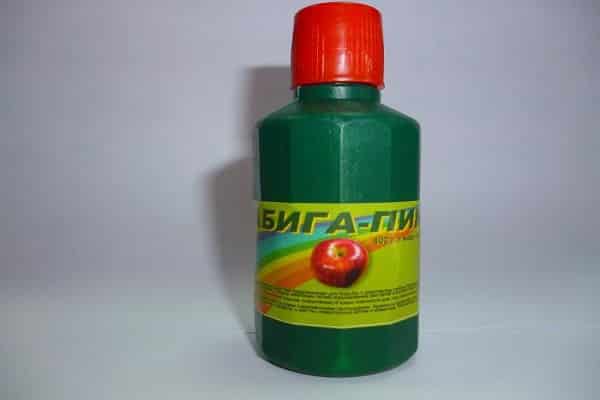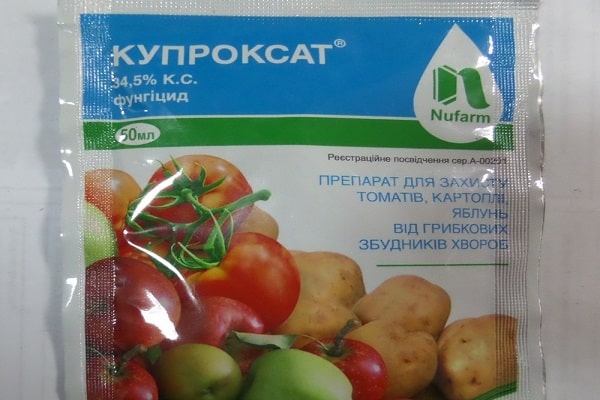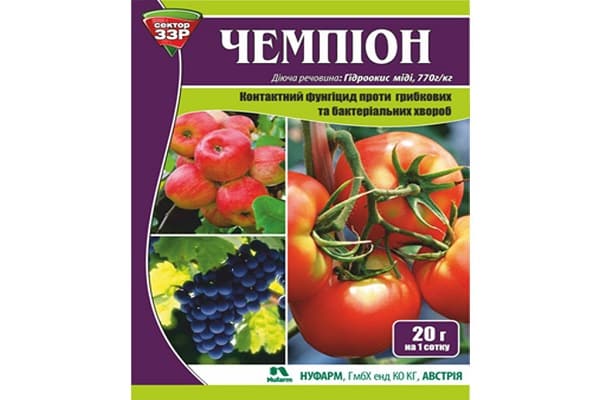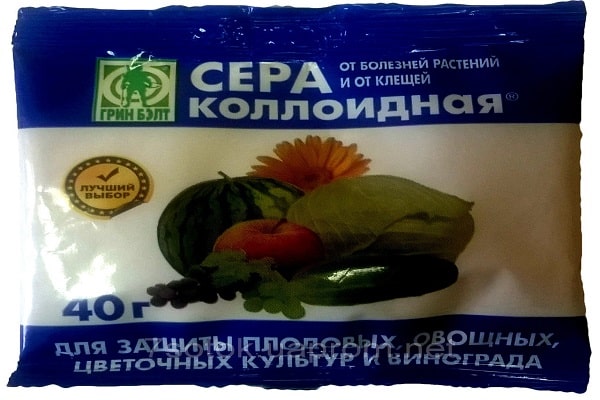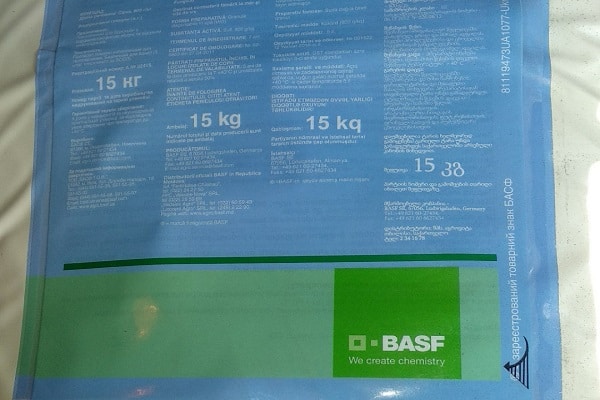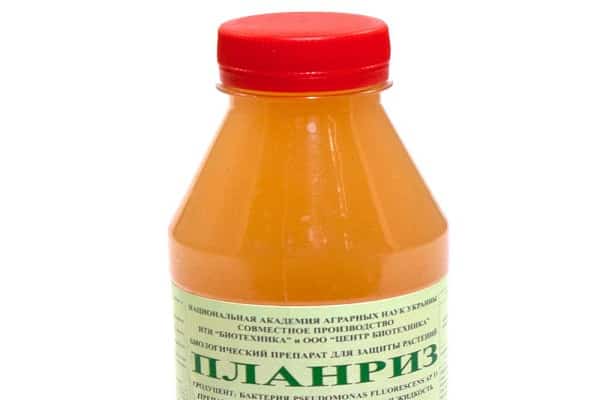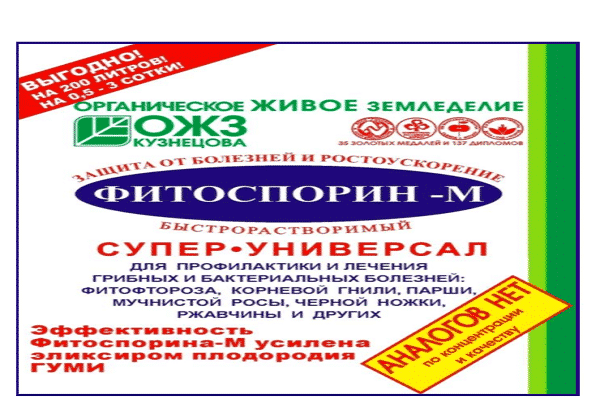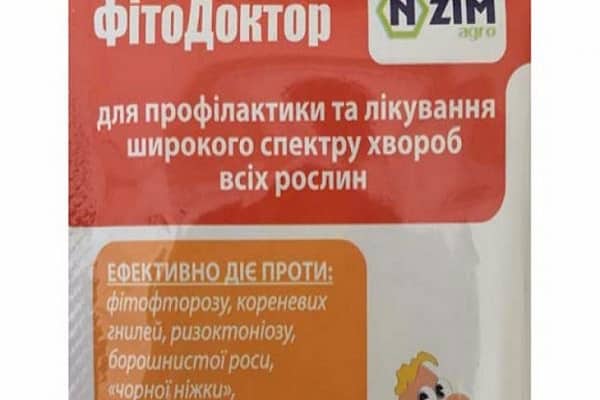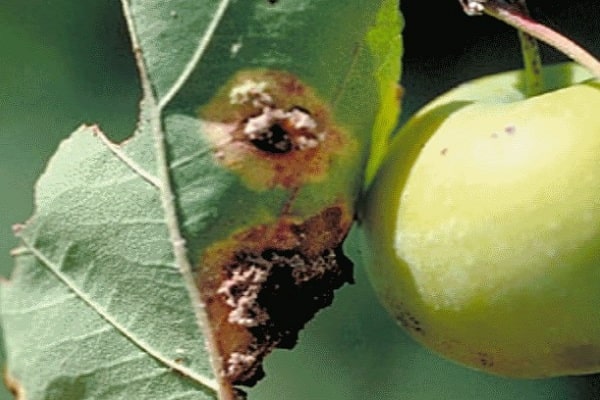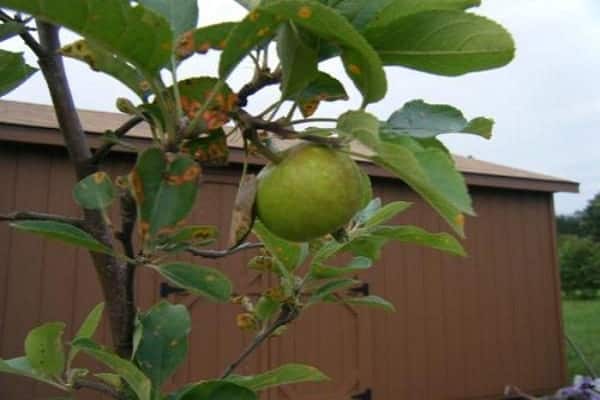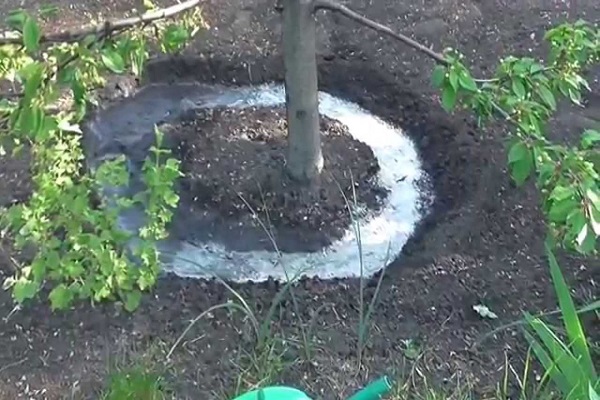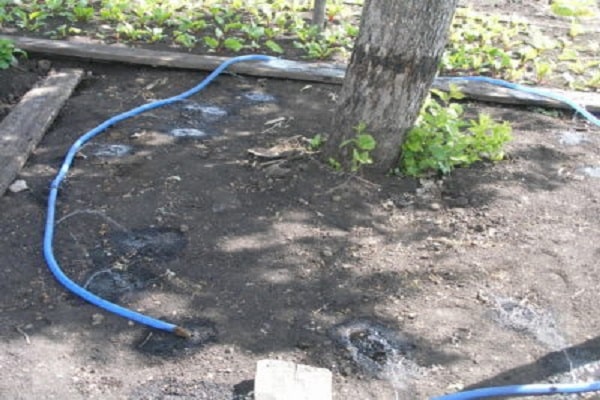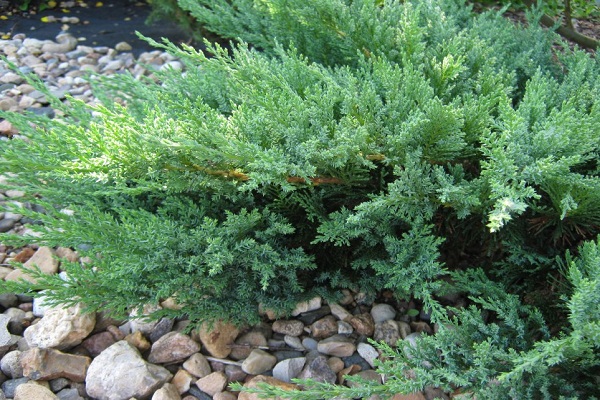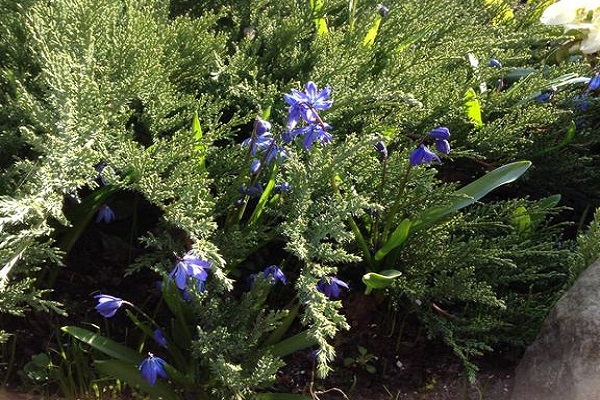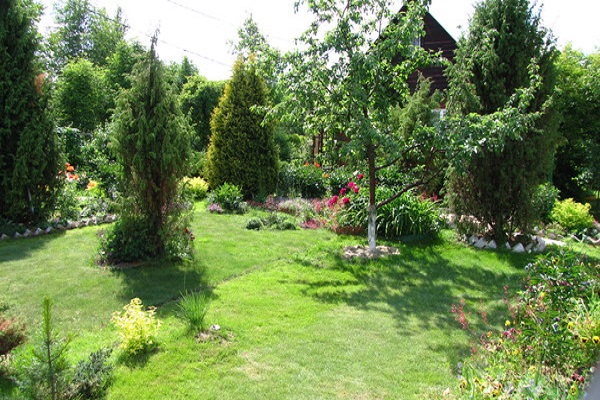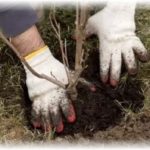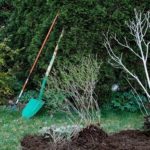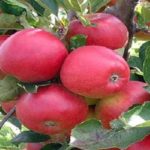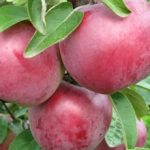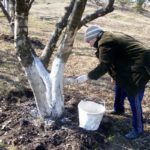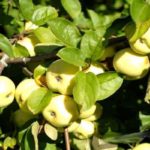The apple tree is the favorite tree of most gardeners, and all thanks to the fact that the crop is easy to care for and is unpretentious. The wide range of uses of fruits, leaves and flowers in everyday life further adds to the popularity of fruit trees. Apple trees, like other plants, are susceptible to various diseases that arise due to some negative factors. It is worth considering in more detail the reasons for the appearance of brown spots on foliage, and how to deal with rust on apple tree leaves.
- What causes rust
- The period of active development of the fungus and how it is dangerous for the apple tree
- Signs of tree disease
- Systemic fungicides to control fungal infections
- "Topaz"
- "Strobe"
- "Vectra"
- Copper-containing drugs for the treatment of disease
- "Blue Bordeaux"
- "Abiga Peak"
- "Kuproksat"
- "Champion"
- Sulfur-containing drugs
- Colloidal sulfur
- "Cumulus"
- Basic biological products
- "Planriz"
- "Trichodermin"
- "Fitosporin M"
- "Phytodoctor"
- Tank mixtures
- Technology and processing time
- Preventive measures to prevent infection
- Why is juniper dangerous for an apple orchard?
What causes rust
The main reason for the appearance of rust stains is due to the presence of fungus. Very often fruit crops planted next to coniferous plants suffer. As they grow, you can notice the appearance of star-shaped outgrowths on the leaves of apple trees, on which new spores are formed, which in the spring will be carried around by gusts of wind to the garden trees. After infection, the disease spreads to the leaves, shoots and fruits.
The most disadvantaged regions for rust on apple trees are the Southern, Southwestern, Southeastern regions of Ukraine and the Republic of Crimea.
The period of active development of the fungus and how it is dangerous for the apple tree
The disease is fungal in nature and after the tree is damaged, it disrupts the ability of the leaves to photosynthesize. The yield is noticeably reduced due to disruptions in water-mineral metabolism. The tree begins to wither right before our eyes. First, a rusty coating appears, then brown spots appear, and then brown spots.
Additional damage is caused to young shoots, from which it is no longer useful to expect a harvest. Severe damage causes the death of young trees. Most often this happens at the beginning of summer - in June-July.
As soon as the disease is identified, it must be treated, otherwise you may lose all the fruit trees in the garden.Apple trees affected by rust die within a few years, during which time the fungus develops more and more.
Signs of tree disease
Any spots on the foliage, or if the leaves are curled, is a signal to the gardener. Rust becomes noticeable from the moment the leaves bloom. Particular attention should be paid to plants in the last spring months.
Initially, round dots of different sizes appear on the leaves, having a green-yellow or light green-white color. Gradually they increase in size, the color changes to bright red, and subsequently the foliage becomes strongly curled. Parasitic spores begin to suck moisture from the vegetative parts of the tree. If the disease is started, it begins to affect the bark and shoots.
At the first appearance of rust, it is necessary to begin treatment to prevent the spread of infection throughout the garden and protect future fruits.
Systemic fungicides to control fungal infections
To get rid of rust, fungicidal agents are most often used as control measures. They are best used to identify the disease. The most effective drugs are those classified as contact or systemic-contact.
Namely:
- "Strobe";
- "Topaz";
- "Vectra";
- "Zineba";
- “Polishing.”
All products have approximately the same effect, aimed at destroying the fungal colony. The spores are defeated, which, thanks to the active particles of the drug, will no longer be able to generate fungi.
You can treat by using several means by alternating, which will prevent the parasite from getting used to the chemicals. The fungus is excellent at adapting to fungicidal agents.This happens very simply; it waits out the adverse effects in spore form, and then the disease begins to develop much more actively.
Universal preparations include systemic fungicides, thanks to which, if used correctly, you can completely cure the garden of red leaves and disease.
As for dosages, medicines are diluted in a bucket of water in the following quantities:
- "Strobe" - 2 grams;
- “Topaz” - 2 milliliters;
- "Vectra" - 2 grams;
- "Polyram" - 2 grams.
All of the above products are diluted in the same quantity, and therefore it is difficult to make a mistake when preparing a medicinal solution. But “Tsenebu” is added to water in the amount of 40 grams.
It is worth knowing: if garden crops have been treated against scab, then there is no need to additionally spray the trees against rust. The chosen remedy will have an effect on both pathogens.
"Topaz"
The product is a powerful anti-fungal drug. Release form: liquid or powder. One tree requires 2 liters per 10 square meters. Treatment is carried out up to several times with a 14-day break between them.
It is recommended to spray trees in dry, windless weather. If it rains a few hours after using the product, then re-treatment is not carried out; this time will be enough for the product to be absorbed.
"Strobe"
The drug has some advantages that allow you to use the product at the time of flower formation. The fungicide is not dangerous to bees.
Processing can be carried out at low temperature, high humidity. The product is effective against various fungal diseases; it is especially successful in fighting rust.
"Vectra"
The active ingredient in this powerful drug is called bromuconazole. For a young tree, two liters of diluted product is enough. Adult fruiting apple trees are sprayed with a solution of 10-15 liters.
The spray product can be used a maximum of 3 times and must not be mixed with other preparations.
Copper-containing drugs for the treatment of disease
Rust fungus is successfully attacked by Bordeaux mixture, which is considered one of the most well-known methods of treating the disease. A working 1% solution is used.
The garden is cultivated for the first time in the spring when the weather becomes more or less warm. In hot weather, it is strictly prohibited to use the product due to the risk of burns on trees.
There are also drugs that can fight rust on apple trees.
"Blue Bordeaux"
It perfectly replaces Bordeaux mixture and is available in granular form. The product dissolves easily in water. The advantage is that the solution is suitable for use in inclement weather.
"Blue Bordeaux" destroys pathogenic colonies along with spores. The tool is contact.
"Abiga Peak"
The main substance is copper. The drug also belongs to the contact group of substances. The product must be applied to the affected areas of the tree. The drug will not penetrate into the inner layers of the wood.
You need to know that the use of “Abiga Peak” is possible only in dry weather. To obtain a working solution, you need to dilute 50 grams of the drug in a bucket of water.
"Kuproksat"
Consists of nitrogen and copper acetate. If you prepare a 0.25% solution, it will neutralize all fungal spores.
The product is suitable for root watering. The benefit of the product is that it destroys rust and saturates the soil with useful components.
"Champion"
It can be used both as a preventive and therapeutic agent. The leaves are covered with a protective layer, and therefore the fungus cannot infect and spread throughout the apple tree.
When fighting rust, conditions are created that are completely unsuitable for the fungus, but complete destruction cannot be achieved. A bucket of water requires 60 grams. The product is contraindicated for use in hot weather.
Sulfur-containing drugs
The next group of drugs against red spots on leaves and spoilage of fruits are drugs containing sulfur.
Colloidal sulfur
Colloidal sulfur in the form of a solution is recommended by gardeners as one of the popular means of fighting rust. To prepare it you need 5 liters of water and 40 grams of sulfur powder.
The greatest effect occurs if the product comes into contact with the affected crop. It is important to remember that colloidal sulfur is not used when trees bloom.
"Cumulus"
The main component is sulfur. Convenient release form, quickly and easily dissolves in water. Does not create dust.
Basic biological products
Biological preparations against rust spots and diseases of apple trees differ from other remedies in that they improve the immune system of fruit crops and increase resistance to fungal diseases. No negative consequences were found during use.
The products are not dangerous for:
- of people;
- flora;
- insects;
- pets.
When using biological products, the harvest is completely safe for both adults and children.
"Planriz"
If brown rust occurs, it is advisable to use this product. The drug in an amount of 50 ml is added to 10 liters of water. "Planriz" effectively fights fungus and enhances the growth of young trees.
"Trichodermin"
It is a very common product with a wide range of effects, including successfully fighting rust. You can prepare a working solution as follows: 100 ml of the product must be diluted in 10 liters of water.
The first treatment is carried out after the buds open, and then twice a month throughout the season. When the apple trees begin to bloom, the product is not used.
"Fitosporin M"
A product with a huge number of positive reviews from gardeners. Trees can be treated throughout the growing season. To obtain a solution, you need to dilute 15 ml of the product in water - 10 liters.
It is possible to process not only trees, but also crops that are difficult to store.
"Phytodoctor"
It has proven itself as a successful means of combating fungus. To prepare a working solution, you need to dilute 30 grams of the product in 10 liters of water. Fruit trees are processed every 14 days during the growing season.
You can start spraying from the moment the buds begin to bloom. Stop using the product before harvesting apples.
Tank mixtures
Now it becomes clear how to use biological drugs; if desired, you can create a combination of several drugs at once. The use of tank mixtures is a very effective method of combating fungus.
It’s very simple to prepare, for 10 liters of water you need to take:
- 50 ml "Planriza";
- 50 ml "Ecoberine";
- 100 ml “Trichodermin”;
- 100 ml "Gaupsin";
- 30 grams of “Phytodoctor”.
If the trees are already affected by the fungus, then the crop must be treated up to 3 times a month, from the moment the buds open until the harvest.
Technology and processing time
If the leaves of apple trees are covered with rust, then you can fight the infection as follows:
- On the first day, as soon as diseased shoots appear, they must be cut 7 cm lower than the affected area. Mandatory destruction of the source of the spread of the disease, for example, diseased juniper. The tree trunk circle is cleared, the soil is treated with copper sulfate in the form of a solution.
- On the second day, spray the apple trees with a fungicidal solution. The choice of drug depends on the growing season. Juniper also needs to be treated with the same product.
- On the fourth day, potassium monophosphate is used to foliar feeding of apple trees. Using potassium humate for watering.
- On the seventh day, treat the fruit trees and juniper with the same fungicide that was selected earlier.
- On the fourteenth day, ash lye is used to treat apple trees.
- On the thirtieth day, a new fungicidal agent against the fungus is selected.
- On the thirty-seventh day - another fungicidal treatment.
- On the fortieth day, potassium monophosphate is used for foliar feeding of apple trees.
After the harvest is harvested, the apple trees undergo sanitary pruning, shoots from the trunk or root shoots are removed. It is necessary to whiten the trunk and lower parts of the skeletal branches. “Fitolavin” is used to treat the tree trunk; mulching is additionally used.
Beginning of the next season - copper sulfate is used to spray trees when the buds begin to bloom. The juniper also needs to be treated.
Before flowering begins, apple trees are treated using a tank mix.
Preventive measures to prevent infection
Any disease can be overcome if treatment is started in a timely manner.Protective measures can help prevent the spread of infection. This practice is called prevention; thanks to timely measures taken, garden trees can be saved.
To prevent the formation of fungus, you must:
- cleaning the garden - after the harvest is harvested, it is recommended to remove plant debris as much as possible;
- compliance with agrotechnical measures (timely processing, fertilizing, proper watering);
- use of fungicides for apple tree processing;
- planting varieties resistant to fungal diseases.
If you promptly inspect fruit crops to identify diseased trees and start treatment on time, losses can be avoided. Any disease is always easier to prevent than to cure.
Why is juniper dangerous for an apple orchard?
Not many gardeners know about the danger juniper bushes pose to apple trees. It is in them that rust pathogens arise and persist. The spores of this fungus are carried by the wind or on the legs of an insect to apple trees. In winter, rust is found in juniper needles, and in the spring it comes to life and attacks the apple tree again.
In order to interrupt this process and not be left not only without a harvest, but also without the entire garden, you should either get rid of the juniper or transplant it from the apple trees at a great distance. Young shoots are especially susceptible to the influence of the fungus.
If you do not want to replant conifers, you should inspect them for the presence of pathogens. They are characterized by the presence of a brown-rusty color on the needles. In this case, you should fight the disease.
For this:
- trim conifers;
- dig the ground deeply and pour boiling water on it;
- treat with fungicides;
- spray trees and soil every spring;
- Carry out regular care for juniper.
However, even despite the complete destruction of coniferous bushes, rust may remain. Its spores can travel distances of more than 50 km. The best way out is timely tree care.

